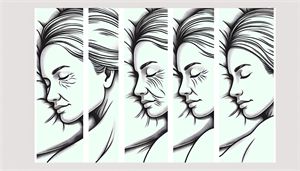Struggling to sleep comfortably on your back? This guide is here to change that. Discover essential tips on how to train your body to sleep on your back, overcoming common challenges like discomfort, sleep apnea, and snoring. We’ll take you through simple, actionable steps to make back sleeping a natural part of your nightly routine, without spoiling the wealth of insights waiting for you as you read on.
Key Takeaways
-
Back sleeping offers numerous health benefits, including spinal alignment, reducing acid reflux symptoms, and preventing sleep wrinkles by minimizing contact of the face with a pillow.
-
Transition to back sleeping can be facilitated with the use of correct mattress firmness, strategic pillow placement, arm and leg positioning, and tools like weighted blankets and adjustable bed bases.
-
Consistency, patience, and having a regular sleep routine can significantly aid the transition to back sleeping, while techniques like elevating the head can help manage sleep apnea and snoring.
The Advantages of Back Sleeping
Back sleeping offers more than just a restful position; it introduces a multitude of health benefits. This preferred sleep position can lead to:
-
Better sleep quality
-
Reduced muscle tension
-
Even weight distribution
-
A pain-free and natural position for your spine
Sleeping on your back is one of the best sleep positions for overall health. Plus, it can even help you look younger! Now, who wouldn’t want that?
Yet, the advantages extend beyond this. Sleeping on your back with the head slightly elevated can help reduce acid reflux symptoms by preventing stomach acid from flowing back into the esophagus. And if that wasn’t enough, think about your skin. Back sleeping can help prevent sleep wrinkles by reducing facial contact with the pillow, which contributes to better skin health and appearance.
Spine Alignment and Pain Relief
Regarding spinal health, back sleeping reigns supreme. By keeping the spine in a neutral position, back sleeping promotes spine alignment and can help alleviate pain in the neck, back, and hips.
If you’re transitioning from side sleeping to back sleeping, you might find some discomfort initially. But don’t worry, a simple trick can help. Placing a small pillow under the knees while back sleeping can help maintain the natural curve of the lower back, support hip flexors, and relieve discomfort. And remember, the size of the pillow matters. Using a pillow that is too large or thick may create more discomfort instead of alleviating it.
Acid Reflux Reduction
If you struggle with acid reflux, back sleeping might be your gateway to restful nights, especially if you’re a stomach sleeper prone to stomach sleeping. By sleeping on your back with a slightly elevated head, you can prevent stomach acid from traveling up into the esophagus. This can make it easier to fall asleep and stay asleep throughout the night.
Scientific research supports this claim. Studies have shown that elevating the head of the bed can be an effective solution for reducing acid reflux symptoms. So, adopting an inclined position for better sleep hygiene can be beneficial for individuals with gastroesophageal reflux disease (GERD), including stomach sleepers who are trying to transition to back sleeping.
Wrinkle Prevention

Concerned about sleep wrinkles? Back sleeping might be the answer you’ve been seeking. By minimizing facial contact with the pillow, back sleeping can help prevent wrinkles and prolong youthful skin.
Think about it. When you sleep on your side or stomach, your face is pressed into the pillow. This can contribute to the formation of wrinkles. But when you sleep on your back, you avoid this facial contact altogether. So, not only do you wake up feeling refreshed after a good night’s sleep, but you also wake up looking fresh!
Strategies for Transitioning to Back Sleeping

If these numerous benefits of back sleeping have swayed you and you’re keen on making the switch, you might be pondering how to begin this new sleeping habit. The good news is that transitioning to back sleeping is easier than you might think. With the right strategies, you can train yourself to sleep on your back and enjoy a good night’s rest.
Choosing the right mattress and pillow, practicing proper pillow placement techniques, and using the correct arm and leg positioning can all help make the transition smoother and more comfortable.
Optimal Mattress Selection
Selecting the suitable mattress is one of the initial moves towards successful back sleeping. A medium-firm mattress is recommended as it can provide the necessary support and comfort for back sleeping.
A mattress that’s too soft might not offer enough lumbar support, which can lead to discomfort and even more serious back problems. On the other hand, a firmer mattress can provide proper support for the back and hips while still maintaining comfort. The right mattress, with its high-quality foam and springs, can help relieve pressure and support the natural curve of your body in any sleeping posture. This includes back sleeping, providing comfort and proper alignment.
Pillow Placement Techniques
Having picked the suitable mattress, it’s appropriate to discuss pillow positioning next. Using pillows strategically can help maintain proper body alignment and prevent you from rolling over in your sleep.
Placing a pillow under the knees can help maintain a slight bend in the knees, promoting comfort and supporting the natural curve of the lower back. Similarly, placing pillows under your lower back can help maintain the natural curve of your spine, reducing strain on your back muscles.
Using body pillows along your back or front can also help prevent rolling over, providing stability and helping you maintain a back sleeping position throughout the night.
Arm and Leg Positioning
Identifying a comfortable position for your arms and legs is pivotal during the transition to back sleeping. It might take some experimentation, but once you find a position that feels good, it can make a big difference in the quality of your sleep.
The ‘starfish position’, where you spread out your arms and legs across the mattress, or the ‘goal post’ formation, where you raise your arms up towards your head, are a couple of sleeping positions that many back sleepers find comfortable. Remember, comfort is key when it comes to a good night’s sleep, whether you’re a back sleeper or a side or stomach sleeper.
Overcoming Common Challenges
Shifting to back sleeping might bring along its unique set of hurdles. These might include discomfort, sleep apnea, and snoring. But don’t let these deter you. With some simple solutions, you can overcome these challenges and enjoy the many benefits of back sleeping.
From adjusting pillow placement and doing some pre-bedtime stretches to using a wedge pillow for back pain, there are several strategies you can employ to deal with discomfort. As for sleep apnea and snoring, elevating your upper body and consulting with a sleep specialist can help manage these conditions.
Dealing with Discomfort
Feeling uncomfortable is usual when adapting to a fresh sleeping position. But don’t worry, there are ways to address this. Optimizing pillow placement, for example, can improve comfort for back sleepers. This could mean:
-
using a specifically designed pillow to keep the spine aligned
-
adding a pillow under the knees or lower back
-
spreading out the limbs to achieve better quality of sleep
Engaging in gentle movements and focused breathing through activities like yoga before sleep can also help relax the body and ease tension. And if you’re experiencing back pain, a wedge pillow can provide a supportive angle for the body, making the back sleeping position more comfortable.
Preventing Sleep Apnea and Snoring
If you’re susceptible to snoring or sleep apnea, back sleeping might appear difficult. However, there are ways to manage these conditions while still benefiting from back sleeping. For instance, you can:
-
Elevate the upper body during back sleeping to prevent sleep apnea and snoring
-
Increase lung function and oxygen levels
-
Potentially reduce the effects of gravity that cause the tongue to fall back and block the airway
These strategies can help you sleep comfortably on your back while minimizing the negative effects of snoring and sleep apnea.
It’s all about finding the right balance. The optimal angle for elevating the upper body to alleviate snoring and manage sleep apnea during back sleeping is approximately 10 to 20 degrees. And remember, it’s always advisable to seek advice from a sleep specialist if snoring or apnea persists.
Additional Tools and Accessories
The shift to back sleeping doesn’t end with pillow and mattress selection. There are additional tools and accessories that can aid in your transition. Weighted blankets, for instance, can help with anxiety and insomnia, while adjustable bed bases can offer customized positioning for better spinal alignment.
These aids and add-ons can ease and comfort your transition to back sleeping. And remember, everyone’s journey to back sleeping is unique, so what works best for you might differ from what works for others.
Weighted Blankets

Weighted blankets have gained popularity over the years for their numerous benefits. They provide deep pressure stimulation, which can assist with insomnia and anxiety, and can aid in transitioning to a back sleeping position.
The pressure from a weighted blanket promotes the production of serotonin, which can lead to deeper and more restful sleep. When selecting a weighted blanket for back sleeping, it’s recommended to choose one that is approximately 10% of your body weight.
Adjustable Bed Bases
Adjustable bed bases are another tool that can be hugely beneficial in your transition to back sleeping. These bases allow for customized elevation and support, facilitating the ability to find a comfortable back sleeping position.
With an adjustable bed base, you can adjust the head and foot of the mattress to create custom positions that cater to your comfort and support needs. When choosing the appropriate adjustable bed base for back sleeping, consider factors such as:
-
Comfort
-
Features
-
Firmness
-
Durability
-
Whether it meets your sleep and support needs effectively.
Tips for Staying Consistent and Patient
Shifting to a new sleep position is a progression. It takes time and patience. But with consistency and the right mindset, you can successfully train yourself to sleep on your back. Here are some tips to help you stay consistent and patient during this transition.
Setting a steady sleep schedule is one of the most efficient methods to help your body adjust to back sleeping. This routine can include maintaining a regular bedtime and practicing relaxation techniques. And remember, maintaining a positive mindset during the back sleeping transition can be beneficial. Focus on the process, use positive self-talk, and find encouragement, especially when coping with setbacks.
Establishing a Sleep Routine
A regular sleep schedule can do wonders for your body and mind, especially when you’re trying to transition to a new sleep position. Having a consistent bedtime can reinforce your body’s circadian rhythm and contribute to better sleep quality. By focusing on improving your sleep habits, you can experience a positive change in your overall well-being.
Your sleep routine should also include activities that help you wind down and prepare your body for sleep. This could be anything from drinking a cup of herbal tea to practicing a few gentle yoga stretches. These activities can help your body relax and make it easier to fall asleep on your back.
Handling Setbacks and Frustration
Keep in mind that shifting to back sleeping is a progression, and it’s perfectly fine to encounter obstacles in the process. The key is to be patient and persistent. It may take weeks or even months to fully transition to back sleeping, but don’t sacrifice your sleep quality in the process.
When dealing with setbacks and frustration, remember why you started this journey. Recall the many benefits of back sleeping and use them as motivation to keep going. Strategically place pillows, use a supportive mattress, and consider sleeping slightly elevated to make the transition smooth and comfortable.
Summary
The journey to back sleeping might seem challenging, but with the right strategies and tools, it’s certainly achievable. Remember, back sleeping is more than just a sleep position, it’s a pathway to numerous health benefits. From better spine alignment and reduced acid reflux symptoms to wrinkle prevention, the benefits are worth the effort. So, why wait? Start your journey to back sleeping today and wake up to a healthier and more revitalized you!
Frequently Asked Questions
Can I train myself to sleep on my back?
Yes, you can train yourself to sleep on your back by consistently practicing and being patient with yourself. Start by laying on your back before bedtime and consider reading a book in this position to relax and prepare for sleep.
What is the healthiest sleeping position?
The healthiest sleeping position is either on the side or back, as it helps keep the spine supported and balanced, relieving pressure and allowing muscles to relax and recover.
How do I stop sleeping on my stomach?
To stop sleeping on your stomach, try using a long body pillow under your stomach to encourage side sleeping and share the pressure loads with your hips.
Why do doctors recommend sleeping on your back?
Doctors recommend sleeping on your back because it promotes even weight distribution, reduces muscle tension, and allows your spine to rest in a natural, pain-free position. This helps promote better sleep and overall spinal health.
How can back sleeping reduce acid reflux symptoms?
Back sleeping with the head slightly elevated can prevent stomach acid from flowing back into the esophagus, reducing acid reflux symptoms.


